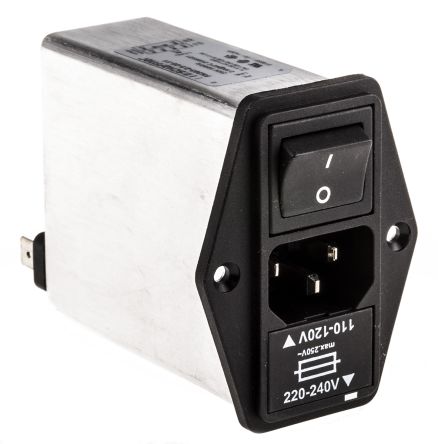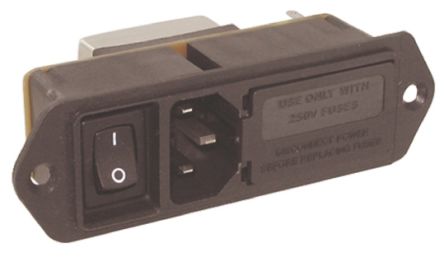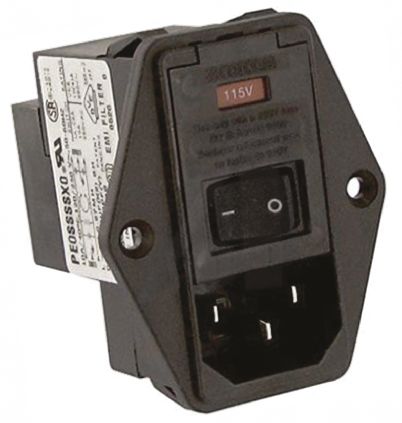- Published 10 Oct 2025
- Last Modified 10 Oct 2025
- 7 min
Quantum Filter Solutions: Low, High & Band Pass
This article explains the three main types of quantum filters used in quantum applications, how they estimate the state of quantum systems at cryogenic temperatures, and why the filters are used.

Any quantum system is extremely sensitive to its environment and may operate in challenging conditions (such as cryogenic temperatures). In general, quantum filters help engineers get the most out of quantum systems by selecting particular quantum signals or properties and suppressing undesirable aspects (such as noise). Quantum filters may be either algorithms or physical devices.
In engineering, three common types of quantum filters are: low-pass filters, high-pass filters, and band-pass filters. This guide looks at all three types and explores the functionality of each filter in the context of applications such as quantum computing, sensors, and communications devices.
Quantum Filter Requirements
Just as filters are used in traditional electronics to improve signals and increase the amount of usable information obtained, quantum filters carry out a similar function in applications based on quantum technology.
These applications include quantum computing and sensing, such as in medical imaging or in magnetometers capable of detecting minute damage to ferromagnetic material. Quantum filters are designed to filter out noise (learn about our range of IEC filters) or isolate frequencies, even in extremely demanding conditions such as cryogenic environments. Low-pass filters, high-pass filters, and band-pass filters are all designed to enable some parts of a frequency to pass through while restricting other parts of the signal. That makes quantum filters vital for quantum computing, quantum sensing, and quantum communications applications. These include developing highly secure forms of data transmission, and quantum filters improve the fidelity of quantum communications by restricting noise and errors.
Browse our selection of quality IEC Filters:
Quantum computing tends to grab the headlines and is advancing all the time, although the industry is in its infancy. Quantum computers promise to solve problems that are impossible for classical computing systems to take on, and they are likely to have applications in clean energy, climate modelling, drug development, and materials science (to highlight just a few of the key areas). Quantum filters play an important role by filtering out noise that can disrupt the qubits – quantum bits, the basic unit of information – in a quantum computer design. Quantum filters are also designed to operate at temperatures close to absolute zero.
This is important because quantum processors are designed to work at this same extreme to mitigate thermal noise and improve the computational capability of the computer. Because quantum systems are so sensitive to noise, which can create errors, filtering out noise and correcting errors are important facets of quantum computing.
Quantum filters take their inspiration from signal filter types widely used in electronics. As such, they build on classical filtering techniques. These include Wiener filtering, which was developed by US mathematician Norbert Weiner in the 1940s to estimate signals in the presence of noise, and Kalman filtering – an algorithm used to estimate the condition of a dynamic system in the presence of noise or incomplete measurements, which was developed by Rudolf E. Kalman in 1960.
But quantum systems pose unique challenges when attempting to measure and estimate what is going on within them. For example, quantum technologies employ the phenomenon of superposition. This states that a system can be in a combination of states, rather than one thing or the other (like with Schrödinger’s cat, both dead and alive until the box is opened), and entanglement (individual particles no longer have independent states and multiple particles are intertwined, regardless of how far apart they are). Because of superposition, a qubit can, unlike a bit in a classical computer, be both a zero and a one at the same time.
Other key concepts that make analysis and filtering difficult include measurement back-action (the notion that measuring a quantum system inevitably disturbs it) and non-commutativity of observables (observables are non-commutative if measuring one affects the outcome of measuring the other).
In the 1980s, a breakthrough in quantum filtering came as a result of the work of Russian-British professor Viacheslav Belavkin, who developed a theory now known as ‘Belavkin filtering,’ which laid the foundations for quantum feedback control, quantum metrology, and quantum state estimation. In short, Belavkin filtering makes it possible to get the best possible estimate of the quantum state of a system, even when measurements are noisy and when observing the system disturbs it. Other engineers have since built on Belavkin’s work to develop quantum filtering.
Let’s take a closer look at three different types of quantum filters – low-pass filters, high-pass filters, and band-pass filters – what they do, and where they are used.
Low Pass Filter
In traditional electronics, low-pass filters allow low-frequency signals through and prevent high-frequency noise. This concept also applies in the world of quantum. The low-pass quantum filter filters out high-frequency elements of a quantum signal while allowing low-frequency parts of the signal through. Some of the high-frequency quantum fluctuations are due to noise or high-frequency dynamics, while low-frequency elements of the signal are often worthy of study. The quantum low-pass filter enables the engineer to concentrate on the useful parts of the signal.
Purpose & Key Features
The primary purpose of a low-pass quantum filter is to cut high-frequency noise from the signal, enabling the generation of reliable data. In experimental quantum equipment, this makes the extraction of useful information more likely. The filter measures the quantum system more accurately by filtering out spurious, rapid fluctuations. Low-pass filters also help engineers to control the system during measurement by controlling quantum feedback. Key features of low-pass filters include:
- Suppressing high-frequency parts of the signal
- Allowing low-frequency parts of the signal through
- Supporting feedback control
- Supporting continuous monitoring and control of quantum systems
Applications of low-pass quantum filters include precision sensing and metrology (such as in magnetometers or atomic clocks) and processing noisy signals in quantum communications, such as quantum key distribution, a communication system that uses quantum mechanics to encrypt and decrypt messages.
High Pass Filter
In classical physics, a high-pass filter works in the opposite manner to a low-pass filter by filtering low-frequency noise and allowing high-frequency components of the signal to pass through. In quantum applications, a high-pass filter suppresses low-frequency noise and enhances high-frequency parts of the quantum signal. High-pass filters can also be used to isolate rapidly changing parts of a quantum system. For example, in quantum sensing, the filter can cut slow environmental noise while retaining rapid changes to the signal from the property under observation – a magnetic field, for example.
Purpose & Key Features
The high-pass quantum filter is designed to isolate rapid quantum processes and filter out lower-frequency noise. High-pass filters are less widely used than low-pass filters. Key features of high-pass filters include:
- Suppressing low-frequency parts of the signal
- Allowing high-frequency parts of the signal through
- Revealing fast events in the system that might otherwise be obscured by low-frequency noise
- Detecting errors (some types of errors show up as fast changes)
Like low-pass filters, high-pass quantum filters are used in sensing tools, including magnetometers, accelerometers, and gyroscopes. High-pass filters are employed for correcting quantum error, monitoring rapid changes in quantum systems, and performing techniques such as quantum-enhanced Raman spectroscopy.
Band Pass Filter
Band-pass quantum filters also take their inspiration from traditional electronics. Like traditional band-pass filters, they allow a specific range of frequencies (a band) to pass through while cutting both high-frequency and low-frequency parts from outside that particular range or band. The aim is to extract data from the quantum system within a certain frequency while shutting out noise or other irrelevant interference.
Purpose & Key Features
The band-pass quantum filter isolates a desired frequency range in a signal while cutting out undesirable frequencies. This helps engineers focus on a particular area of interest within a quantum signal. As with other types of quantum filters, employing the band-pass filter cleans up the signal in order to enable more precise measurements or estimations of the quantum system. Key features of band-pass filters include:
- Focusing on a range (band of a signal) and eliminating noise from outside the range
- Focusing on a signal of particular interest in a quantum system
- Improving measurement accuracy
- Enabling targeted control
Applications of band-pass quantum filters include quantum sensing at specific frequencies, quantum key distribution, metrology and spectroscopy, and qubit readout and control.
Without these different types of quantum filters, it wouldn’t be possible to track, estimate, and control quantum systems. Because quantum signals are often very noisy, filters help to extract meaningful data from them. Even when measurement data is imperfect, the filters help engineers to assess a quantum system’s state. Thanks to Belavkin filtering, they also do this while compensating for the peculiar nature of the quantum world, such as the fact that measuring a quantum system also changes it. Quantum filters also play an important role in enabling the control of quantum systems by giving insights into their state in real time.
In short, quantum filters are vital as we approach an era in which quantum computing becomes more and more practical and commonplace. They enable us to extract meaningful data about noisy and indirectly observable systems. Without them, applications such as quantum computing, quantum sensing, and quantum communications simply wouldn’t be possible.
RS carries a wide range of electronics equipment. Explore our range of passive components.
Related links
- Active Filters
- Low Pass/High Pass Filter Calculator
- Signal Filters
- What Makes a Medical-Grade Transformer?
- Abracon Band Pass Filter Active Filter
- Crystek CBPFS-0433 SAW Band Pass Filter RF Adapter
- TE Connectivity Chassis Mount Band Pass Filter, Threaded Bolt 3 Phase
- Maxim Integrated Low Pass Filter Active Filter, 5th Order



